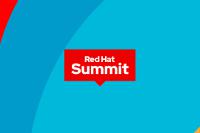IBM subsidiary Red Hat used its annual Summit event to whet developers’ appetite for the upcoming newest version of its Red Hat Enterprise Linux operating system, providing more information on RHEL 9’s new capabilities around edge computing, security and automation.
Red Hat Summit, held this week virtually and in person in Boston, also included announcements for the Raleigh, N.C.-based company’s OpenShift containerized software suite, more validated patterns to speed up edge architecture building and updates on the Ansible Automation Platform.
The summit also shared the calendar with Red Hat parent IBM’s annual Think event, which was also held virtually and in Boston.
[RELATED: Red Hat Exec: Training Investments Reflect ‘Renewed Emphasis On Partners’]
More than 5,000 certified partner applications are delivered by hundreds of independent software providers (ISVs), according to Red Hat. These applications focus on artificial intelligence, machine learning, development operations (DevOps), networking and other areas.
Red Hat has proven key to IBM’s hybrid cloud growth strategy, with the tech giant reporting an increase of 21 percent year over year to Red Hat revenue during its latest quarterly earnings report.
IBM’s consulting wing about doubled its Red Hat-related signings year over year, with the Red Hat practice amassing a nearly $4.5 billion book of business from inception to date.
Recently appointed Red Hat channel chief Stefanie Chiras told CRN in an interview this year that technologies enabling edge computing, artificial intelligence and machine learning are some of the major technologies partners will see the company invest in.
Here’s what you need to know.
Red Hat Enterprise Linux 9 GA Coming
The Red Hat Enterprise Linux (RHEL) 9 operating system becomes generally available “in the coming weeks,” according to the company.
RHEL 9 promises a more consistent experience across the open hybrid cloud, from bare-metal servers to public clouds and enterprise network edges. Customers will have the ability to choose underlying architecture, application vendor or cloud provider, according to the company.
This latest RHEL release is built from CentOS Stream, the continuously delivered Linux distribution that tracks ahead of RHEL. By building from CentOS Stream, the broader RHEL ecosystem, including partners, have an easier time providing feedback, code and feature updates, according to Red Hat.
RHEL 9 Edge Capabilities
When RHEL 9 does become generally available, it will come with enhancements aimed at edge computing, according to Red Hat.
RHEL 9 will offer comprehensive edge management delivered as a service, according to Red Hat. This service will allow users to oversee and scale remote deployments with greater security and control functionality. Users will have zero-touch provisioning, system health visibility and more responsive vulnerability mitigations from a single interface.
The latest RHEL version will also have automatic container rollback with the Podman integrated container management technology, according to Red Hat. Podman can automatically detect if a newly updated container fails to start, then rolling the container back to the previous working version.
RHEL 9 also has a new image builder service that works with customized file systems and major cloud providers and virtualization technologies, including Amazon Web Services, Google Cloud, Microsoft Azure and VMware.
A simplified installer to deploy systems with greater security remotely at the edge or at a central data center is another key feature, according to Red Hat. RHL 9 will have a FIDO Device Onboarding (FDO) technology preview meant to reduce time and costs for edge deployments and a Gnome Kiosk Mode for graphical environments with only essential components.
RHEL 9 Security Features
RHEL 9 promises to protect against hardware-level security vulnerabilities like Spectre and Meltdown, according to Red Hat.
The operating system has the ability to help user-space processes create memory areas inaccessible to malicious code and RHEL 9 provides readiness for Payment Card Industry Data Security Standard (PCI DSS), the Health Insurance Portability and Accountability Act (HIPAA) and other customer security requirements.
RHEL 9’s integrity measurement architecture (IMA) digital hashes and signatures create a new way for users to detect rogue infrastructure modifications, according to the company.

New Automation With RHEL 9
The new version of RHEL will have an expanded set of system roles that can provide an automated workflow for specific configurations.
RHEL 9 will offer system roles for Postfix, high-availability clusters, firewall, Microsoft SQL Server, web console and more.
Kernel live patching from the RHEL web console will allow IT operations teams to apply updates across large, distributed system deployments without accessing command-line tooling, according to Red Hat. This should simplify how teams address issues from the core data center to multiple clouds to the edge.
Ken Goetz, Red Hat’s vice president of customer success, recently told CRN in an interview that the company has launched new dynamic skills paths for partner training, including paths for infrastructure modernization, IT automation, migrations, upgrades, container management, accelerating application development and other use cases.
New Edge Partners
Red Hat announced two new edge partners in its ecosystem during the summit.
Red Hat-certified systems now work with edge computers from South Burlington, Vt.-based OnLogic, whose offerings include small, fanless industrial computers and high-powered, rugged computers that can handle artificial intelligence and machine learning workloads.
Intel Next Unit of Computing (NUC) Element modules are now certified for RHEL 8 and 9.
A certification for RHEL edge systems is also available to help partners with enticing customer interest in edge. Dell Technologies, Hewlett Packard Enterprise (HPE), Lenovo and other partners offer RHEL edge certified technology and expertise, according to Red Hat.
Red Hat OpenShift Updates
Red Hat announced updates to its OpenShift containerized software suite, including more consistent capabilities from edge to core to cloud with OpenShift Platform Plus.
Red Hat OpenShift 4.10, released in March, has zero-touch provisioning, which aims to allow repeatable, automated set up of edge systems. Zero-touch provisioning (ZTP) includes factory workflows for original equipment manufacturers (OEMs).
Manufacturers can preload relocatable OpenShift clusters on preferred hardware, giving customers a fully operational, pre-installed cluster for faster delivery of radio access networks (RANs), according to Red Hat.
Other OpenShift edge updates include topologies management with Red Hat Advanced Cluster Management. Users can manage single-node OpenShift clusters, remote worker nodes and three-node compact clusters, according to Red Hat. One Advanced Cluster Management hub cluster can deploy and manage 2,000 single-node OpenShift clusters.
New Validated Patterns
Red Hat Edge received new validated patterns for IT teams that need to build edge architectures quickly.
Included is a medical diagnosis pattern that uses Git operations (GitOps) to help health care providers ingest, analyze and act upon medical images and data.
A multicloud GitOps pattern is aimed at organizations that run workloads on different clusters on different clouds, public or private, according to Red Hat.
Ansible Updates
The Ansible Automation Platform from Red Hat has a new automation mesh visualization to show where automations run to provide scaling wherever needed, according to Red Hat.
Users can scale capacity as edge environments grow and bring automation closer to edge workflows, according to Red Hat.
Ansible Automation Platform’s recent re-architecture should also simplify automation deployment at scale across hybrid clouds and edge environments, according to Red Hat.
In December, Ansible Automation Platform 2.1 became available, with capabilities around automation scaling, diverse environment connection and new developer tools for automation content.
GM Collaboration
Red Hat announced a collaboration with General Motors to expand the ecosystem for the IBM subsidiary’s in-vehicle operating system, which is a Linux OS foundation for GM’s Ultifi software platform launching in 2023.
Red Hat ‘s cloud-native, enterprise-grade, open-source OS promises to speed up vehicle application updates with continuous safety certification, according to the company. As a Linux-based system, Ultifi should be usable for almost any GM developers, suppliers and developers.
The integrated software should support infotainment, advanced driver assistance systems, body control, connectivity and other in-vehicle safety and non-safety-related apps, according to Red Hat.
Kyndryl Partnership
IBM subsidiary Red Hat and recent IBM spinoff Kyndryl announced a strategic partnership and integrated services and solutions based on the Ansible Automation Platform.
Kyndryl – formerly IBM’s managed infrastructure services business – will use Ansible Automation Platform as the primary enterprise automation solution across its infrastructure services, according to a statement.
New York-based Kyndryl will be the leading service provider for Ansible Automation Platform. It already runs tens of millions of automations and manages more than 500,000 customer endpoints worldwide. Kyndryl and Red Hat jointly support about 900 customers worldwide.
Red Hat and Kyndryl will work together to build out new storage and network automation capabilities across the Kyndryl services team. The two companies will also establish an Ansible Innovation Center to co-create services and jointly develop playbooks, enablement and support.
Kyndryl services practitioners have more than 5,000 Red Hat certifications and accreditations to date, according to the company.









